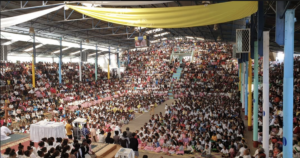Famadihana, the exhumation or turning the deads ceremony
Every 7 years this Merina family does the Famadihana. And I was lucky enough to end up at this event.
* Merina (“those who always come back”) people live on the plateau of Madagascar, just south of Tana (short for Antananarivo). They originate from Indonesia, and yeah one can see it from their facial features.
Famadihana is a traditional ritual that different Malagasy ethnic groups organize, typically once every 5 years (richer family) or 7 years (less rich family), each group having it’s own twist, of course. But generally, this is a funerary tradition according to which the family organizes an event translated in English as the turning the deads or turning the bones. An extended family from all around the Madagascar and friends from the village come to the event.
The first day, the family gathers; the second day, there is a party for close family; and the third day the real fest is held.
While playing the music and dancing, they all enter the family thomb and bring out the bodies of the ancestors. They sort all the bodies outside the thomb, they redress (rewrap) the corpses in fresh “clothes” and rewrite their names on them so they will always be remembered. Then they offer the corps to drink some rhum, it is to satisfy spirits.
I was part of this event on a sunny day mid-September. The family head and his wife were totally welcoming and happy I was there. They told me that it was the first time they found the bees in the tomb, but that they think the spirits are bringing them good luck. They thanked me about million times, while in fact, it is me who was honoured to be allowed to be an part of their personal event.





